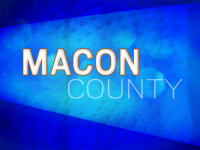Plan for teacher raises a bone of contention
 The ramifications of one particularly disturbing directive passed in the last session of the General Assembly is unfolding right now in every county in North Carolina, and it promises to provide some spirited political drama that just about no one saw coming when it passed.
The ramifications of one particularly disturbing directive passed in the last session of the General Assembly is unfolding right now in every county in North Carolina, and it promises to provide some spirited political drama that just about no one saw coming when it passed.
Legislative leaders decided they would provide meager pay raises of $2,000 over four years — yes, a whopping $500 a year — to 25 percent of teachers in each of the state’s school systems. The lawmakers decided it was best to leave it up to each school system to decide how to conjure up a fair formula to decide which teachers would get a raise and which wouldn’t.
Righting what’s wrong means making changes
 We are now — officially — barreling into the holidays. Thanksgiving is already a fading, drowsy memory of turkey carcasses and piles of dirty dishes. As we march onward toward Christmas and the new year, my mind always goes into the same pattern, one I can’t shake: I think of blessings and shortcomings, wondering why the things that aren’t right can’t be righted.
We are now — officially — barreling into the holidays. Thanksgiving is already a fading, drowsy memory of turkey carcasses and piles of dirty dishes. As we march onward toward Christmas and the new year, my mind always goes into the same pattern, one I can’t shake: I think of blessings and shortcomings, wondering why the things that aren’t right can’t be righted.
And so a couple of recent articles about opportunity in this country and how those who come from wealth are more likely than ever in recent history to remain in the upper income brackets hit home. In order to change this, we need to do more for children, especially those who haven’t reached what we have traditionally deemed “school age.”
Coding for the rest of us
If the very thought of trying your hand at computer programming or writing software code is intimidating, Dr. Jonathan Wade has got an event for you.
There’s an app for that: If not, a growing number of students are learning to create one
 Imagine you’re a college student in the summer of 2010. One of your professors offers you a job. He has just acquired 30 of the newest android phones. Your assignment? Just fool around with them. See what they can do. Sweet.
Imagine you’re a college student in the summer of 2010. One of your professors offers you a job. He has just acquired 30 of the newest android phones. Your assignment? Just fool around with them. See what they can do. Sweet.
That’s what happened to Chris Blades the summer before his senior year at Western Carolina University.
SEE ALSO: At WCU, an app to keep students out of the rain
SEE ALSO: Student profiles
SEE ALSO: Coding for the rest of us
Community help needed to save education
 I’ve heard all the speeches and read all the legislative fantasies, and I’m still not satisfied with what I’ve heard about the state of the schools. The stories don’t match.
I’ve heard all the speeches and read all the legislative fantasies, and I’m still not satisfied with what I’ve heard about the state of the schools. The stories don’t match.
One question I cannot get the answer to is this: is the figure used by the state legislature for school budget before or after the reversion monies? When did the reversions start? Why?
Swain targets education, infrastructure and high tech with $2 million grant
Swain County residents have finally learned where exactly its $2 million in grants from the Golden LEAF Foundation will go — to schools, job training and infrastructure.
The face of the shutdown: Local childcare centers teetering as shutdown interrupts funding
 All Nicole Smith could do last week was try to keep the doors open.
All Nicole Smith could do last week was try to keep the doors open.
Either the shutdown of the federal government would end, or North Carolina officials would tell her they don’t have the million of dollars necessary to cover childcare costs for needy infants and toddlers in the state, some of whom spend their days at her small center in Waynesville.
Raising the bar: Tougher curriculum + tougher testing = lower scores ahead
 Schools are bracing for a precipitous drop in student test scores coming down the pike next month — the result of a new, more rigorous curriculum and testing standards implemented statewide last year.
Schools are bracing for a precipitous drop in student test scores coming down the pike next month — the result of a new, more rigorous curriculum and testing standards implemented statewide last year.
Lawmakers in denial about plight of poor
By Dawn Gilchrist-Young
Of the 120 or so 12th-graders I teach each year, about two-thirds have jobs outside of school. Of those two-thirds, there is a large number who work 30 to 40 hours a week. Their jobs range from bagging groceries and stocking shelves, to cleaning motel rooms, to chopping, splitting, and delivering firewood. As I included in my first column about the teaching I do at Swain County High School, the per capita income in 2011 was $19,506. For 2012, the projected income was $19,089. Of the county’s 14,000 residents, 3,000 live below the poverty level, and of those, almost 1,000 are children, including my students. For most readers, these are merely numbers, but for me, as a teacher, they are numbers that have faces.
Cutting education spending is like eating your seed corn
 I’ve always loved school. Consequently, I detest what the General Assembly is doing to education.
I’ve always loved school. Consequently, I detest what the General Assembly is doing to education.
As a kid, I knew that looking forward to school each day put me in a minority. Maybe it was my parents’ influence. My dad was a high school graduate and the son of a textile mill foreman in Cheraw, S.C. He joined the Navy as soon as he could and got the hell out of Cheraw. My mom quit high school when she got married at 16 but earned her GED when she was in her 40s. I always felt that they both had high expectations for me — the youngest of three boys — from a very early age.





